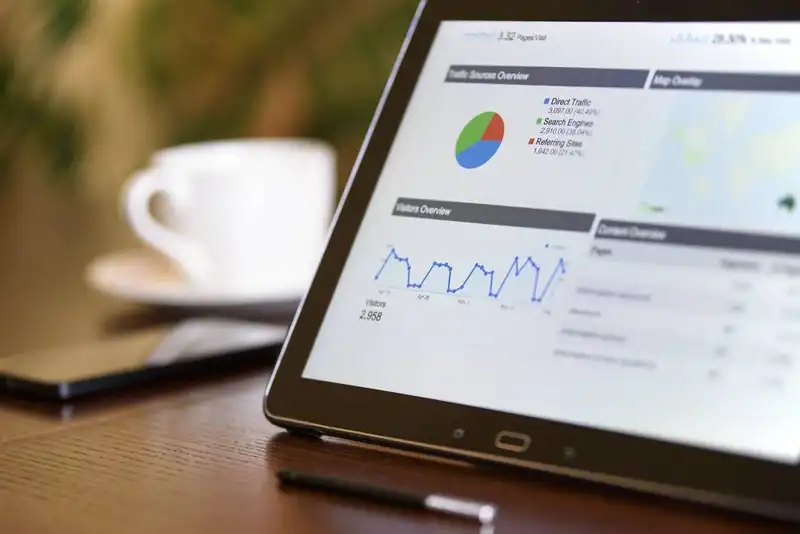What is a business intelligence platform?
A business intelligence platform (BI platform) is a type of application software that provides a single, integrated view of data from multiple sources. It is used to support the decision-making process by providing tools for data analysis, reporting, and visualization.
The Power of BI- How to Use a Business Intelligence Platform to Maximize Sales
What is a Business Intelligence Platform?
In 1971, a small Guatemalan restaurant, Pollo Campero, revolutionized the poultry industry by offering a novel concept- flavorful chicken meals. Now, a multinational chain of fast-casual restaurants, Pollo Campero is one of the largest chicken chains globally, with over 270 locations in eight countries. After decades of success in Guatemala and Mexico, the chain expanded into the United States in 2002, with a restaurant in Los Angeles, California. It spent the next two decades building its business model, with over 80 restaurants across the U.S.
In 2022, Pollo Campero has major expansion plans, hoping to set up 250 restaurants across the U.S. over the next five years. To accomplish this growth strategy, it was important for the fast-casual chicken chain to identify its key markets, understand the mobility patterns of its target customers by daypart (a specific segment of the day and what is served during those hours), and determine their ideal locations.
The only way to figure out all these data-driven metrics was to leverage technology. The management at Pollo Campero realized it well. The chain has now implemented various Business Intelligence tools to help segment its markets using mobility data and predict customer behavior.
But how will a business intelligence (BI) platform help this restaurant chain achieve its target?
In many ways. BI will use data to accelerate growth. Modern business intelligence platforms make it much easier to access and analyze data. The main purpose of business intelligence has always been to use data more effectively, but business intelligence platforms allow for this process to be much more efficient, ultimately resulting in a new relationship with data.
Business intelligence platforms collect and process vast amounts of information from various data sources, which can then be analyzed and packaged in useful formats, like dashboards, reports, and data visualizations. Business intelligence tools are the backbone of competitive strategies. They help companies make better decisions with their data. The purpose of BI platforms is to help companies turn their data into a competitive advantage in today's data-saturated world.
Business intelligence uses software to collect information. Data from various sources internal and external is first collected by BI software and stored in a central location, creating a data warehouse. Mining that data provides an organization with both, the big picture of its performance across various indices, and an in-depth understanding of particular business aspects.
What Are the Different Data Sources at a Restaurant?
Before we move forward and define the various data sources at a restaurant, it is important to understand what we exactly mean by data. Data is often misconstrued as being overly complex or difficult to comprehend. It is, however, simply a collection of facts or statistics that can be used for analysis.
For instance, when an item at a restaurant is sold, it generates data. This log of information is called transactional data and includes details like the average amount spent per transaction, along with other information like the average number of items ordered per transaction, specific products ordered in each transaction, along with the dates and times when transactions occurred. Some of this information is called product data and includes information about what menu items are most popular, and when they're most commonly ordered.
The most important data sources at a restaurant can broadly be divided into four categories.
Inventory Data- To manage costs, restaurateurs should understand the recipe and ingredients of each dish before deciding what to include on their menu. They should also ensure that each ingredient is listed on an inventory sheet. They should provide ingredient-DCP (daily consumption point) calculations by dividing the total DCP of each ingredient used during the day by the number of servings made using that ingredient.
Financial Data- In restaurants, businesses depend on the collection and analysis of financial data to effectively manage their finances. Some of the most important financial data includes recurring items like rent, utilities, wages, revenues (per period), cost of raw materials, total sales, the average cost per item, total food cost, cash flow projections, and profit.
Kitchen Data- In a restaurant business, the time it takes for a prepared order to leave the kitchen and reach the customer's table is important. Successful restaurants have accurate measures of such statistics. Such data can be manually managed by tracking orders, managing inventory and waste control. However, an automated kitchen display system could take care of collecting and reporting this data efficiently.
Customer Data- Building better relationships with customers is the most important aspect of a restaurant business and is essential to increasing sales. Customer demographics and data on their purchasing habits, preferences, and personal information, are vita to building long-lasting relationships with your customers. There are a number of ways to collect customer data. For example, loyalty programs and other programs that offer benefits can be used to collect contact information, email ids, birthdays, and feedback. Companies can also use third-party apps integrated into their POS system or a CRM software program to build a more comprehensive dataset of customers.
Business intelligence is a powerful tool that can help you make sense of all your data and find the insights that will show you how to optimize sales and boost profits.
You’ve got a ton of data, but not sure what to do with it. You’re not sure how to make sense of it or where to start.
How Does an Intelligence Platform Work?

Business intelligence applications draw on data stored in multiple systems, presenting the information in ways that make it easy to interpret and act upon. Such information can come from transactional databases, survey results, weather reports, retail sales records, website traffic patterns, and more. This analysis is then summarized and packaged in reports as dashboards, business presentations, and data visualizations.
It is important to note that Business Intelligence and Artificial Intelligence are different, but complementary nonetheless. AI refers to computer intelligences, while BI refers to the more intelligent business decision-making that data analysis and visualization can yield. Business intelligence (BI) platforms analyze and interpret Big Data with BI software tools. They enable users to mine for patterns in large datasets that can provide insights into past performance, guide decision-making for future action, and reveal hidden relationships in the data.
Focused on efficient transitioning of information, the use of business intelligence tools helps with Data Integration, analysis, and preparation so that decisions can be made in accordance with the organization's goals. Eliminating the need to manually dig through large amounts of data, business intelligence is useful for decision making by both management and employees.
Hubworks, a cloud based restaurant software solutions platform, offers a bouquet of software solutions for restaurantslike Zip Reporting, Zip POS Dashboard, and Zip Forecastingthat address all the business intelligence and business analytics needs of foodservice operations.
Key Features of a Good BI Platform
A good business intelligence platform can help an operator pinpoint the status of their business, larger market trends, and suggest ways to make their business grow. Here are six features every business intelligence (BI) solution should have.
- Personalized Dashboards- A personalized dashboard provides tailored, relevant information to business leaders, enabling faster and better decision-making. It delivers easy-to-understand KPIs and summary information on a regular, scheduled basis. In addition, its Exception Reporting feature alerts executives about incidents that require immediate action and provides optimal solutions to those problems.
- Interactive Analytics- Businesses are now taking advantage of interactive reports that combine data with analytics to provide useful data analysis and insights. Businesses can employ augmented analytics platforms to improve the ways they interact with data and use it. These tools systematically collect, interpret and analyze data in order to assist in the automation process. Analytics dashboards allow users to understand the analysis within reports and the underlying data those reports are based on, thus supporting a more informed decision-making process.
- Self Service BI- Self service business intelligence refers to an approach to data analytics that enables business users to access, explore and analyze data even if they don't have a background in data mining or BI. Self-service BI solutions empower business users with the ability to collect, analyze, and visualize data without involving BI and Information Technology professionals. Self-service BI capabilities make it easy for employees with a wide range of job responsibilities to gain insights from the data the organization collects.
- Location Intelligence- Location analytics helps businesses answer questions about where their optimal facilities and distributors should be located. Analyses also optimize supply chain management, mapping manufacturers, distribution warehouses, and retail outlets and cross-referencing transportation routes. It enables effective forecasting, and optimizes warehousing processes and stock flows.
- Mobile BI tools- Most business management tools, such as inventory management, supply chain management, and point-of-sale systems, now come with mobile apps to give their users increased mobility. These apps give business owners more flexibility to remotely monitor and operate their establishments. Business intelligence tools, too, are beginning to incorporate functionalities that allow data to be accessed and viewed on mobile devices.
- Natural Language Processing- Thanks to the mainstream adoption of self-service business intelligence (BI) tools, specific technical skills are no longer the sine qua non to building reports from datasets. The latest extension is natural language processing (NLP). BI and self-service analytics vendors are increasingly offering NLP to make databases more like web searches.
How to Choose the Right BI Software for Your Business
The best business intelligence tools provide users with a single view of their entire business. With BI, you can quickly see your business from top to bottom, instead of clicking through Excel tabs or digging through reports. BI dashboards and reports aggregate the data you need quickly. The faster you are able to access important information, the better you can manage your analytics and business.
The right BI tools for your business are the ones that enables you to drill down into deeper levels of data, apply analysis such as moving averages and regression to highlight trends in data, use time-series data to scan large datasets to understand anomalies, and set alerts for any data exceptions.
The role of Analytics and Business intelligence (BI) software is to help companies analyze sales data and make business decisions that increase revenue and grow businesses.
For example, in the restaurant industry BI systems integrate with other technology tools like Point of Sale (POS) systems, Inventory Management systems, and Warehouse Management systems in real time. These tools gather reports and analyze data to present insights on the operation.
A BI system will also show you how your restaurant or foodservice business is performing by looking at details like sales data, inventory data, and so on. With a deeper understanding of market trends, a business can spot strategies employed by competitors, track the performance of locations against each other, and learn what its customers prefer to eat. These insights are invaluable for creating long-term strategies to beat the competition.
Restaurant managers are always looking for ways to increase sales and profits.
But in the restaurant industry, there are many challenges that can make this difficult.
Top 3 Business Intelligence Software
Here are three examples of efficient business intelligence software that can help grow your business and reduce losses.
1. Zip Forecasting
The Hubworks app, Zip Forecasting, can be used to streamline sales and inventory tracking for restaurants. It integrates with existing restaurant management systems, offers weather forecasts, and enables business owners to be prepared with the right inventory.
Its advanced algorithms can completely automate projections based on past data and let users choose the time period for which projections are to be based. This makes forecasting a lot less time-consuming, even eliminating the risk of error. The time saved can be allocated to customer service. This tool gives business owners real-time updates on how their businesses are doing. It even offers daily projections within 15-, 30-, or 60-minute time intervals, based on past data.
Hubworks' Zip Reporting is another business intelligence solution that allows users to analyze data and insights from their company in real time, using any device.
2. Zoho Analytics
Zoho Analytics is a cloud based business intelligence service that helps organizations of all sizes obtain valuable insights from their data. It allows users to easily create and share powerful reports in minutes with no help from the IT department. Users can securely upload any data from anywhere, including spreadsheets. Push data can be uploaded from any application, from the cloud or in-house business applications and databases for reporting and analysis. With an easy to drag-and-drop interface, one can visually analyze and build insightful reports and dashboards easily. Embedded analytics can feed complex data presented in the form of reports, dashboards, and spreadsheets directly into websites, applications, and other services. White labelling enables you to get a full-fledged business intelligence solution under your own brand name.
3. Touch Bistro
TouchBistro is an application that focuses on automating most business processes that employ restaurant technology. The platform can effectively manage orders, tables, and staff schedules, among other functions. These tasks can be done online through an iPad while the application runs on a local area network, allowing no downtime even if an internet outage occurs. TouchBistro's menu-management capabilities are also enhanced by its potential to report and manage menus using the cloud, which allows managers to continually monitor their businesses from anywhere.
Conclusion
Business intelligence (BI) and analytics help identify business blindspots. By unearthing problem areas, a business can avoid losing money. With more data collected over time, predictive machine learning algorithms will refine projections, allowing businesses to know exactly what alterations are needed in their business strategies to maximize sales and ensure consistent growth.
For instance, for its U.S. expansion strategy, Pollo Campero first had to complete a customer profile and develop a location development strategy based on that profile. With roughly 30,000 intersections across the country to consider, the company wanted to root its growth strategy in a deeper understanding of its customers. To identify its key customers and real estate strategy, Pollo Campero used location data from BI Spatial and Near to pinpoint the most promising locations. In doing so, the company prioritized and ranked top 500 intersections in the country for both new corporate and franchise locations. The results were then shared with franchisees to create market plans in their respective geographies, going to show that the uses of BI platforms are both, broad and deep.
You have a lot of data but no idea what it all means. You’ve been working hard to collect it, but now you want to make sense of it.
You need a business intelligence platform that will help you make sense of your restaurant data and uncover insights that will show you how to optimize sales and boost profits.



